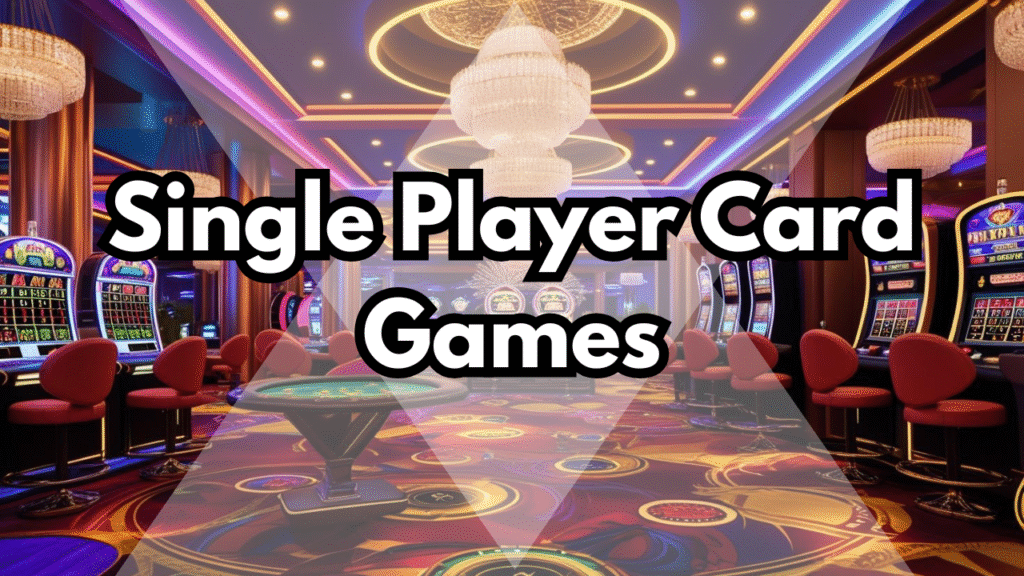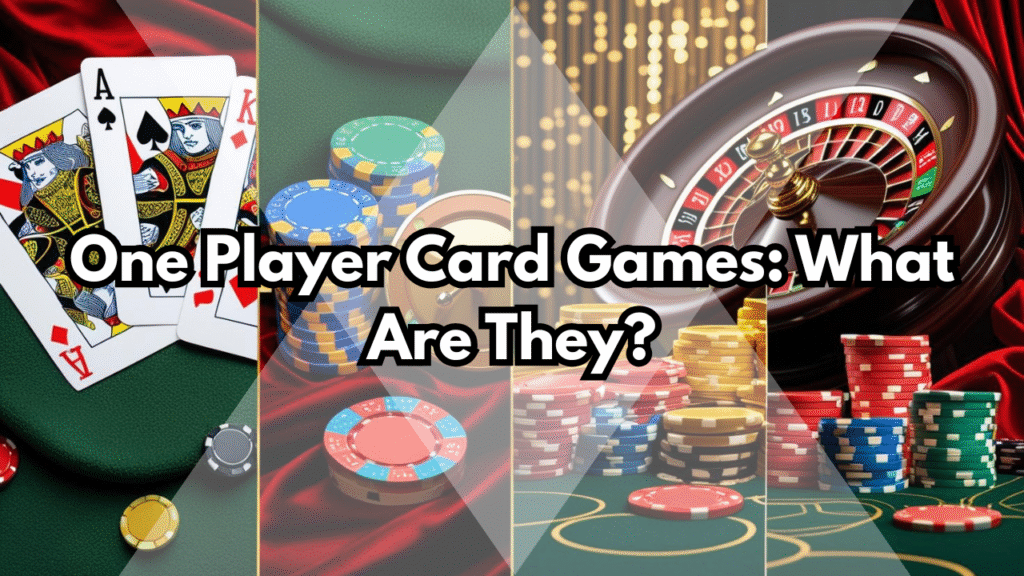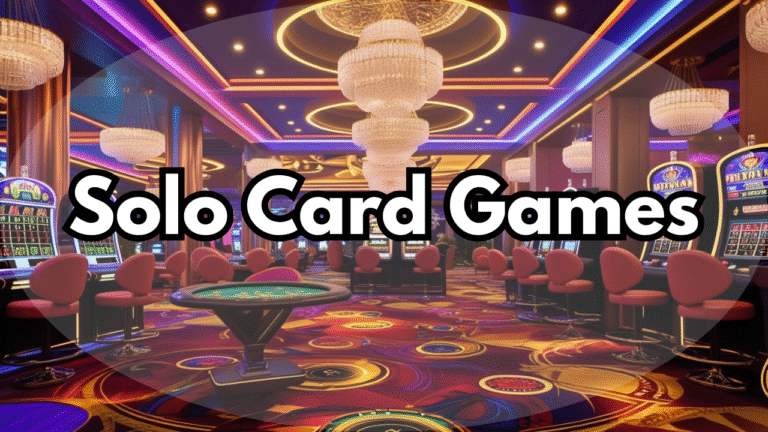Hello there!
Single Player Card Games: When faced with the fast-paced, chaotic world of multiplayer RTS games, the intellectually fascinating and refreshing alternative are single-player card games. These games have subtly but significantly altered the gaming scene by providing players with fun and quantifiable mental and cognitive advantages. Their beneficial effects are evident, ranging from improving memory retention to honing strategic thinking.

Solitaire, FreeCell, Pyramid, Spider Solitaire, and TriPeaks are just a few examples of the many single-player card games that offer a challenging and entertaining experience for players of all skill levels and experience levels of dedication. In this article, we’ll go over the advantages of these games and back them up with research, expert approval, and a gameplay walkthrough.
One Player Card Games: What Are They?
In “solitaire games” and other similar titles, just one player is required to play. The player is asked to accomplish a certain job, such stacking cards in a specific pattern, according to regulations, and the game focusses on strategy, preparation, and foresight.

They are great for solo play and focused thinking since they don’t rely on real-time communication.
Seven Advantages of single player card games
1. Promotes Mental Flexibility
Flexibility, strategy, and preparation (both short- and long-term) are essential in single-player card games. It is essential to consider the possible knock-on effects of any action before taking any. The result is a brain that is more malleable and active.
2. It helps in problem-solving
The difficulties in these games keep getting worse. Competing successfully on a challenging board requires skills that are applicable in real life: the ability to think creatively, recognise patterns, and deduce logical conclusions.

3. Enhances Focus and Retention
The ability to memorise sequences, colours, and suits is often required for all patience games with the exception of Pyramid. Concentration, working memory, and short-term memory are all improved with repeated play of the same game.
4. Stress and anxiety are reduced.
One possible use for single-player games as a kind of digital meditation is their repetitive, calming quality. It puts you in a relaxed, aware frame of mind that helps you feel more in charge of your life and more fulfilled.
5. It promotes patience and self-control.
Timing and self-control are often the deciding factors in winning solo card games. The game teaches its participants to be patient and deliberate by having them plan their moves two or three steps ahead of time.
6. Offers Low-Cost, Offline Entertainment
These games are perfect for short breaks, travel, or waiting periods because they don’t require continual internet access or social constraints. They’re also affordable and accessible.
7. Provides instruction in CRM
Resource management is crucial, whether players are shuffling cards, flipping decks, or controlling the use of power-ups in video versions. It teaches players to maximise their resources and prevent making mistakes.
How to Play Single-Player Card Games in 5 Simple Steps
Take Your Time Choosing a Game:
Start with games like Classic Solitaire or TriPeaks that are easy, and when you’re ready, go on to more challenging ones like Spider or FreeCell.
Pay Close Attention to the Rules:
There are different sets of rules for each version. Before you jump in, make sure you know the goals, the moves that are allowed, and the conditions for winning.
Practice with Digital Tools:
Desktop platforms and mobile apps have user-friendly interfaces, helpful suggestions, and undo options to make learning easier and faster.
Noticing Trends and Formulating Strategies:
Analyse instead of merely playing. Acquire a keen eye for sequences and suits, learn the patterns of the cards, and think ahead at all times.
Log Your Progress:
Keep tabs on how many moves you make each match, your success rate, and the time it takes you to complete each task. Make greater use of these numbers as you go along to fine-tune your strategies.
Examining the Persistence of Single-Player Card Games
Online multiplayer and high-definition gaming may be booming, but single-player card games are still very much in vogue. When it comes to casual games played on mobile devices, patience games consistently rank high in terms of downloads. Their universal appeal, low resource requirements, and stimulating mental challenge make them suitable for all platforms and generations.
In addition, educational psychologists often recommend these kinds of games to seniors as a cognitive treatment component. Their deep gameplay and user-friendly design make them ideal for mental exercise.
Answers to Common Questions
For a first-time player, what is the recommended card game for one-on-one play?
An good game for newbies are the clear aims and simple rules of Classic Solitaire.
Is Playing Card Games Alone Good for Your Health?
Your memory, concentration, and stress levels can all be improved with these games, according to the research.
Is it safe for kids to play card games with just one player?
Very much so. To help kids develop their reasoning and numerical recognition skills, use games like Pyramid or Matching Cards.
can I play the games without an internet connection?
Answer: Most single-player card games are playable without an internet connection, making them perfect for trips or places with spotty service.
What is the typical duration of a game?
Depending on the game type and the level of difficulty, a session can last anywhere from five to fifteen minutes.
Playing a single-player card game can be more than just a fun way to pass the time on your computer; it can also help you focus, relax, and develop your strategic thinking skills. These games show that playing alone may be entertaining and educational, whether for fun or for mental benefit. By learning the ins and outs of these classic favourites, players may turn a daily habit into a mental challenge.

In order to make this blog search engine optimisation friendly, I need your input on whether or not to add a meta description, keywords, and internal linking structure.

